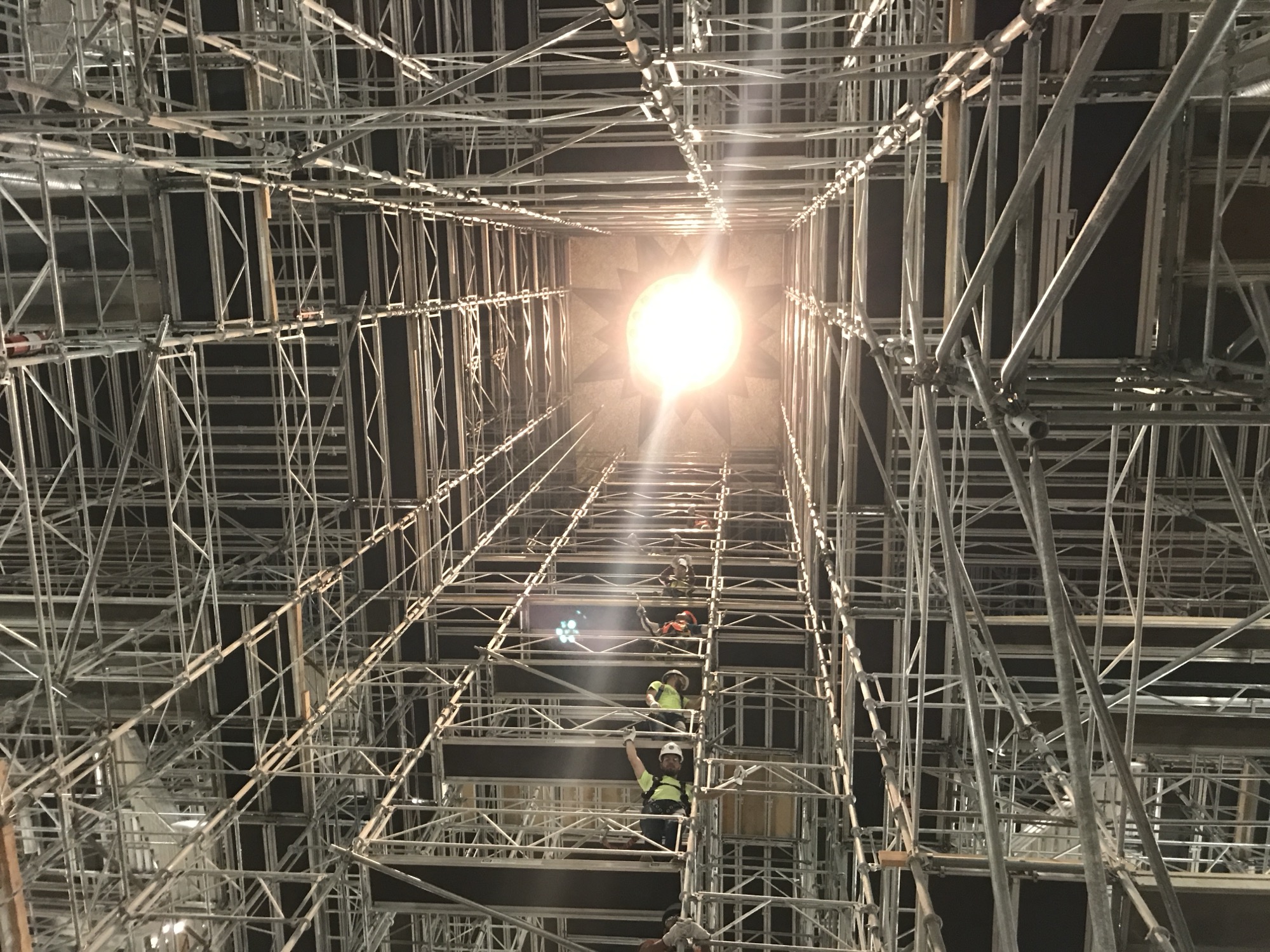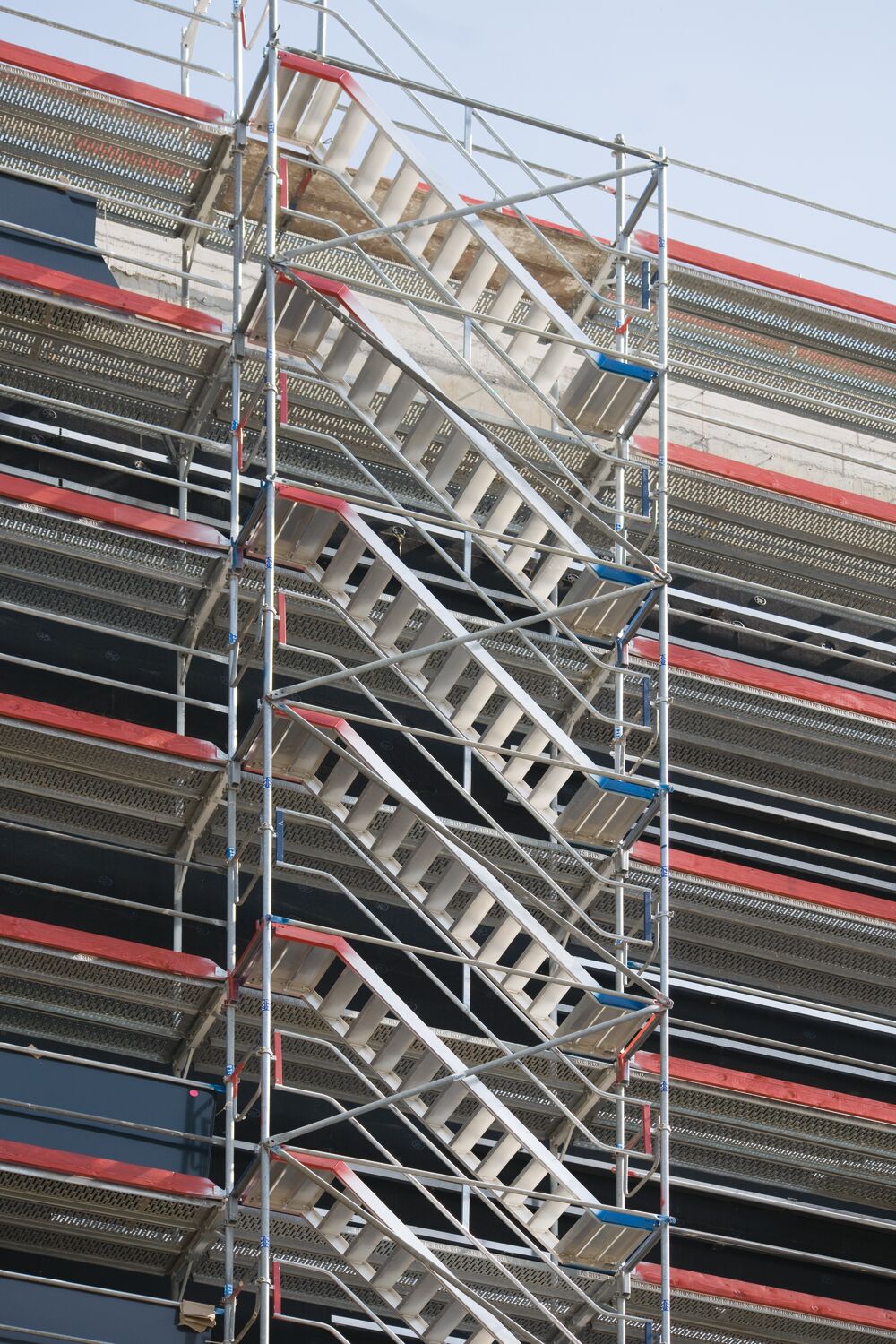Residential Scaffolding Solutions for Safe and Efficient Home Improvements
Residential Scaffolding Solutions for Safe and Efficient Home Improvements
Blog Article
A Comprehensive Guide to the Important Attributes of Scaffolding in Modern Construction
The landscape of modern building and construction significantly depends on effective scaffolding systems that prioritize advancement, performance, and safety. As tasks expand in complexity, understanding the crucial functions of scaffolding ends up being crucial for making certain employee safety and security and maximizing task timelines. This overview explores different kinds of scaffolding, highlights key safety functions, and checks out product improvements that contribute to efficiency and sustainability. The effects of these aspects expand far beyond plain building methods, triggering a better look at exactly how they affect overall project success and employee health.
Sorts Of Scaffolding
Although scaffolding systems can differ commonly in design and application, they usually fall under a number of distinctive categories that cater to various building and construction requirements - Scaffolding. One of the most typical types consist of supported scaffolding, put on hold scaffolding, and rolling scaffolding
Supported scaffolding includes platforms sustained by a structure of poles, which supply a elevated and steady functioning surface area. This type is typically made use of for tasks that call for substantial altitude, such as bricklaying or external paint.
Suspended scaffolding, on the other hand, is utilized for tasks requiring accessibility to high altitudes, such as cleansing or fixing structure facades. This system hangs from another framework or a roof, allowing workers to lower or raise the system as required.
Rolling scaffolding functions wheels that permit for simple mobility throughout a task website. It is specifically valuable for tasks that need constant moving, such as interior operate in huge areas.
Each kind of scaffolding is created with particular applications in mind, making sure that building projects can be accomplished successfully and properly. Understanding these categories is essential for picking the proper scaffolding system to satisfy both task needs and website conditions.
Trick Safety Features
Safety is vital in scaffolding systems, as the potential risks connected with operating at elevations can cause significant mishaps otherwise appropriately taken care of. Secret safety features are important to make sure the well-being of workers and the integrity of the construction website.
Firstly, guardrails are vital. These barriers provide a physical protect against drops, considerably reducing the threat of significant injuries. In addition, toe boards are usually utilized to avoid tools and materials from diminishing the scaffold, protecting employees below.
Another crucial element is using non-slip surface areas on platforms. This function improves grip, particularly in unfavorable climate problems, thus decreasing the chance of drops and slips. Access ladders ought to be firmly positioned to help with safe entry and departure from the scaffold.
Normal examinations and maintenance of scaffolding systems are likewise crucial. These assessments make certain that all components remain in great problem and working properly, resolving any kind of wear or damage promptly.
Lastly, correct training for all employees entailed in scaffolding operations is important to make sure that they understand security protocols and can recognize prospective risks. Scaffolding. Collectively, these functions create a more secure working setting and considerably mitigate risks related to scaffolding
Material Advancements
Improvements in material science have dramatically influenced the scaffolding market, enhancing both safety and performance in contemporary construction. The introduction of high-strength steel and light weight aluminum alloys has transformed traditional scaffolding systems. These products are not just lighter, making them much easier to set up and deliver, however also provide premium load-bearing abilities. This results in scaffolding structures that can support better weights while minimizing the danger of collapse.
In addition, innovative composite materials, such as fiberglass-reinforced plastics, have actually become viable alternatives. These products are resistant to deterioration and ecological deterioration, therefore expanding the life-span of scaffolding systems, especially in extreme weather problems. Making use of such products contributes to lower maintenance expenses and makes certain consistent performance in time.


Design Considerations
Taking into consideration the complexities of contemporary building jobs, efficient scaffolding layout look here is extremely important to guaranteeing both capability and safety. Layout factors to consider must incorporate different factors, consisting of lots capability, elevation, and the certain needs of the building website. Each job offers unique obstacles, requiring an adaptable strategy to scaffolding systems that can adjust to differing conditions.
Structural honesty is crucial; for that reason, designers have to compute the loads that the scaffolding will support, including workers, products, and equipment. The option of materials plays an essential role in guaranteeing the scaffolding can stand up to these lots while staying light-weight and long lasting. Additionally, the layout needs to enable easy access and egress, helping with the smooth movement of employees my link and materials.
Safety and security functions, such as guardrails and non-slip surfaces, should be incorporated to decrease risks of crashes. Additionally, the format must think about the surrounding environment, including adjacent frameworks and possible risks. By resolving these style considerations, construction companies can boost the performance of scaffolding systems and promote a safer working environment, ultimately contributing to the general success of the job.
Maintenance and Evaluations
The effectiveness of scaffolding systems prolongs past initial layout and execution; ongoing upkeep and regular examinations are vital to ensuring their continued performance and safety throughout the period of a project. Regular examinations need to be performed by certified employees to recognize any type of indicators of wear, damages, or instability that could endanger the honesty of the scaffolding.
Upkeep methods must consist of regular checks of structural elements, such as fittings, frames, and planks, guaranteeing that all aspects stay free and secure from deterioration or other damage. Furthermore, the capability of safety and security features, such as guardrails and toe boards, should be analyzed to make certain conformity with security laws.
Documents of all examinations and maintenance tasks is crucial for accountability and regulatory conformity. An organized strategy to record-keeping not just help in tracking the condition of the scaffolding yet additionally provides required evidence in the occasion of an incident.
Ultimately, developing an extensive upkeep and assessment schedule will substantially reduce the danger of accidents and enhance the overall security of the construction website. By prioritizing these methods, building supervisors can protect workers and copyright the task's stability.

Final Thought
To conclude, the important features of scaffolding in modern-day building and construction include a series of crucial aspects, including varied types, key safety devices, product advancements, and thoughtful design considerations. Emphasizing safety and security via guardrails and non-slip surface scaffolders yard areas, along with improvements in products like high-strength steel, boosts both performance and sustainability. Routine upkeep and assessments are essential for ensuring structural integrity and safety on building and construction sites, eventually promoting effective job implementation and promoting the health of workers.
The landscape of contemporary building significantly relies on effective scaffolding systems that focus on innovation, efficiency, and security.Improvements in product scientific research have actually considerably influenced the scaffolding market, enhancing both safety and security and performance in modern-day building and construction. In general, these material advancements not only enhance the performance and safety of scaffolding systems yet likewise line up with the industry's push towards sustainability, as many contemporary products are designed to be more environmentally friendly.
Thinking about the intricacies of contemporary building and construction projects, reliable scaffolding style is paramount to ensuring both capability and security.In final thought, the crucial functions of scaffolding in modern-day construction include a variety of essential elements, consisting of diverse kinds, vital safety devices, product innovations, and thoughtful design factors to consider.
Report this page